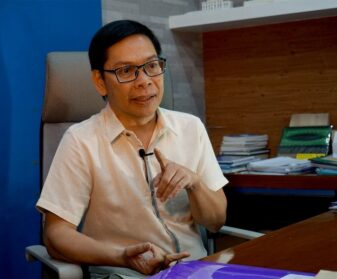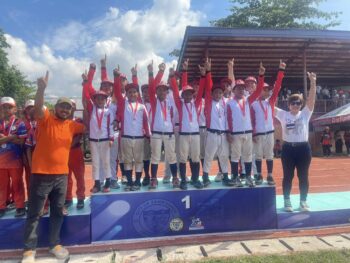
NAAWAN, Misamis Oriental (MindaNews / 3 January)—The PUV Modernization Program is aimed at making the Philippine public transport aligned with global standards by providing the riding public with a transport system that is safe, reliable, convenient, and environmentally friendly.
Particularly, the program will implement a standard to maximize the benefits of modern jeepneys across the country. Accordingly all jeepney engines should at least be Euro-4 and PNS- (Philippine National Standards) compliant engines or LPG-powered, electronic, and hybrid. They must have GPS, an automated fare collection system and a CCTV camera and free wireless connection to look for to be considered as a modernized jeepney. Furthermore, at least 15 years old can no longer be registered or operated. No decrepit PUVs shall be allowed to ply any thoroughfare once the program is in full gear.
Accordingly, the PUVMP is expected to create jobs and benefit the economy. By upgrading PUVs, the program will generate demand for new vehicles, which will create jobs in the automotive industry
Overall, the PUVMP is a comprehensive blueprint designed to elevate public transportation. The process of realizing such desirable public transport is the very enemy or obstacle to the dream goal.
First, it demands traditional jeepney operators to surrender their individual franchises and to consolidate as a corporation or a cooperative so they could pool their resources and avail loans from the banks with better terms in the acquisition of a modern jeepney units that costs around P2.5 million a unit. This is not much a problem to big operators but a herculean challenge to those who operate just one or two jeepney units. The cost is staggering and is perceived to impoverish them. If they avail of the modern jeepney, their income would only be siphoned by loan amortization. They would lose their freedom and independence and reduce them to serfs of financial institutions.
Those who will not comply with the requirement will lose their right to operate by Jan. 1, 2024, while jeepneys in routes with only 60% consolidated vehicles or below will still be allowed to ply the road until Jan. 31, 2024.
The deadline for consolidation lapsed on 31 December 2023. Those who failed to consolidate will no longer be allowed to ply any route nor to join consolidation. By LETB rule, operators with consolidated franchises can operate their traditional jeepneys until the modern fleet is acquired. Unconsolidated jeepney operators may be allowed to serve the routes of corporations or cooperatives that lacked the necessary units until January 31, 2024. Beyond that, it would be illegal to ply their vehicles anywhere; they would be phased out, and said operators and their drivers would lose their livelihood.
According to official registrations there are 250,000 jeepneys in the Philippines, approximately 55,000 thereof in Metro Manila,
Transport regulators admit, only one in three jeepney units has merged franchises in Metro Manila ahead of the year-end deadline.
Data shared by government agencies shows that 153,787 (69.08%) out of 222,617 units have “complied” with industry consolidation. They also said 1,739 cooperatives have been formed nationwide. However, in the National Capital Region, only some 35% so far have gone into consolidation.
A number of jeepney operators and drivers are defiant; they would rather have their units phased out and lose their livelihood than join the consolidation program of the government that would choke them to death anyway. Many were already out of the road the last two days in Metro Manila and have started looking for new livelihood.
It is estimated that jeepneys across the country ferry 40 million person trips/day. If the government doesn’t blink, we’ll surely have a transport crisis in days to come.
No question the transport modernization program is beneficial to the commuting public and the country at large. The government needs only to devise a strategy to realize that it would lessen the burden of jeepney franchise holders and their drivers.
For instance, the government in partnership with the private sector, may put up a recycling and production facilities for the modern jeepneys, the production materials of which are the recycled parts of the traditional jeepneys it bought from the owners. The payment for the purchase of old units may become their advance payment for the modern unit.
In this manner, no idle old jeepneys are junked to rot in some corners, multiple jobs are created, no one would lose a livelihood, the riding public is happy, and the environment is cleaner.
One important feature that should not be missed in the modern vehicle is its accessibility to persons with special needs, say person with disabilities (PWDs) and mobile infants: a wheel chair and stroller ramp and a corner allocated for these passengers. This special feature is the final determinant of a truly modern Filipino jeepney.
(MindaViews is the opinion section of MindaNews. William R. Adan, Ph.D., is retired professor and former chancellor of Mindanao State University at Naawan, Misamis Oriental, Philippines.)






